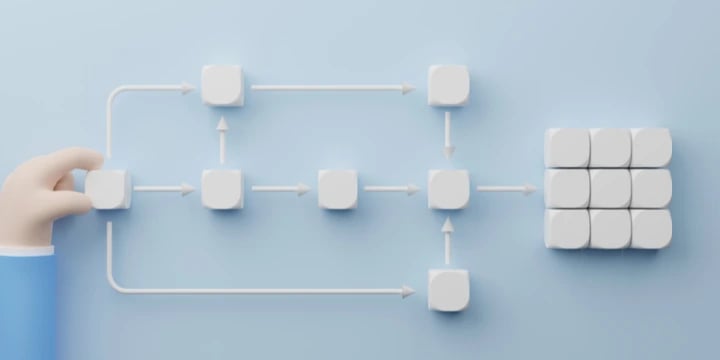
- They may speak to potential suppliers by phone or in person.
- They may ask their preferred supplier for a quote and establish a budget and draft your tender documents based on this quote. If you are the preferred supplier in this scenario you have an obvious competitive advantage.
- They may issue an Expression of Interest (EOI) asking potential suppliers to provide details of their solutions to help them further refine their needs and requirements. They may use this process to shortlist potential suppliers for a subsequent tender. They may hold an industry briefing.
Buyers may draft tender request documents themselves or engage specialist consulting firms to draft tender documents on their behalf. It may be the consultants who conduct the industry consultation discussed above. In some cases, draft tender documents are issued to potential suppliers for feedback.
This gives you, the supplier, a possible opportunity to influence the tender documents in a way that improves your chances of winning. At this stage in the tender process buyers may broadcast their intention to issue the tender documents by way of a notice to the market. For example, the Western Australian government issues an ‘early tender advice’ and provides the estimated advertising date of the tender. At Australian Tenders we record these as future tenders and alert you to them via our tender alert service.
Step 4: Issue Request for Tender documents
After spending months preparing the tender documents the customer will formally issue the Request for Tender documents and ask for responses usually within weeks. This turnaround time might seem short if you were previously unaware of the tender, so keeping an eye out for future tenders where possible is worth it. Future tenders are sent out to those with alerts set up for newly-published tenders at Australian Tenders. Using a tender notification service can offer you a competitive advantage. When you download the tender documents, you will usually be required to register with the organisation who issued the tender. This enables them to send you any addendums or their response to any questions raised.
Step 5: Prepare a tender response
During the tender response phase, you will have the opportunity to ask the buyer questions in writing and may be invited to attend a briefing session or site visit. There is almost always a deadline for asking questions.
Briefing sessions might or might not be compulsory, either way we recommend that you attend: The knowledge gained can be invaluable, and furthermore you will have opportunity to meet the buyer, your potential customer, and identify competitors. The buyer may issue changes to the Request for Tender documents during this phase in the form of an addendum.
- Lodge your tender response
The Request for Tender or quote (RFT or RFQ) will have a closing date and time and will require the response to be lodged electronically or printed and lodged at their office. Make sure you lodge in the requested format before the closing date and time. When lodging via upload or email, take into account the time it might take for the upload. Don’t leave it until the last minute as these deadlines are always strict.
Step 6: Tender Evaluation
Once you have lodged a tender response the evaluation process commences. Government tenders normally use a panel of people to evaluate the tender responses. It can be useful to know who is on the panel. The first step for the buyer in the evaluation process is to identify which tenders are conforming or non-conforming. If for example you failed to provide all the information requested then your tender response could be deemed non-conforming and may not even be evaluated.
Conforming tenders are then evaluated against the evaluation criteria in the tender documents. During the evaluation process you can expect to receive written questions from the buyer. This is your chance to shine by responding promptly and in detail. If you do not receive any questions during this phase it is possible that your tender response is not under serious consideration. Once the evaluation is complete a short list will likely be formed and those on the short list will be invited to undertake a presentation or an interview.
Step 7: Tender Award
- Tender negotiation
Once the tender is awarded, majority of the time, proposals and informal tenders normally involve some negotiation. The 'Tender Negotiation' step is when the preferred supplier and Issuer reviews some elements of the contract before the signing the contract. Potential areas for negotiation are: the term of payment, warranties and guarantees, completion dates, maintenance, repairs or after-sale services, compensation for failure to meet specific requirements, documents required and more.
Step 8: Contract Signature
The final step in the process is to sign the contract, which should be a simple formality. The contract that you are expected to sign is normally provided as part of the Request for Tender (RFT) documents which you have read carefully and fully understand. You are now in a binding contract and are obligated to sign the contract within the nominated period. There might be some contract details that are still to be negotiated in which case you may then enter a contract negotiation phase to finalise the details of the contract.
- Contract Performance
You have signed the contract and now it’s up to you to deliver. It is likely that you have a tight delivery time frame and face liquidated damages if you fail to deliver. If you deliver the chances of winning the next tender are greatly improved. If not, the chances are significantly reduced.
If you want to learn more about how we can help your tendering process, drop us a line via email here. Alternatively, check our our free "Introduction to Tendering" eBook. It has everything you need to know about procurement and getting started on your journey. We want you to win, and we're here to help you.






